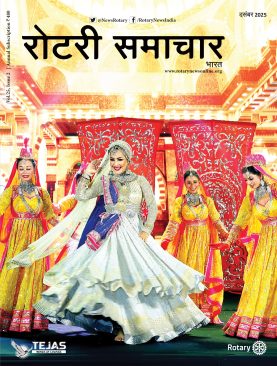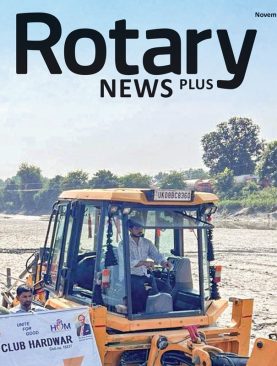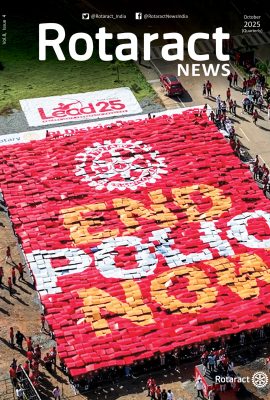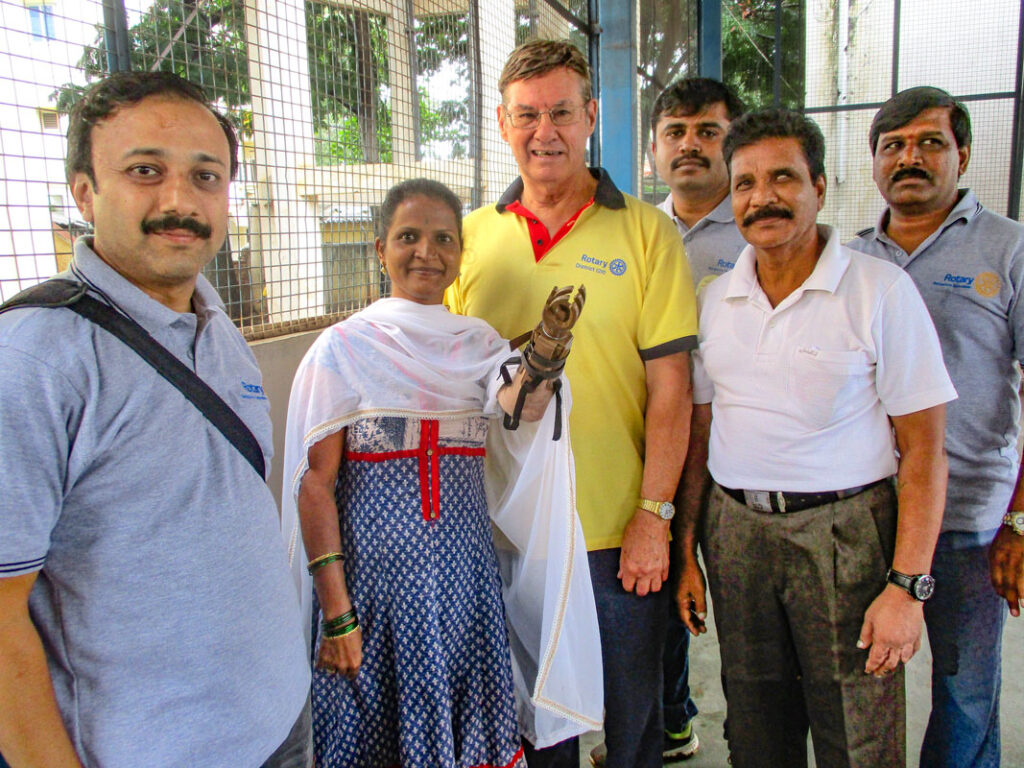Rotary Jaipur Limb, UK, a preferred charity of RIBI (Rotary International in Great Britain and Ireland), has worked for long years to fund and support artificial limb camps in Asia and Africa. In its 32-year history successful projects have been carried out in Benin, Ghana, Haiti, India, the Ivory Coast, Kenya, Malawi, Nepal, Nigeria, Rwanda, Sri Lanka and Tanzania.
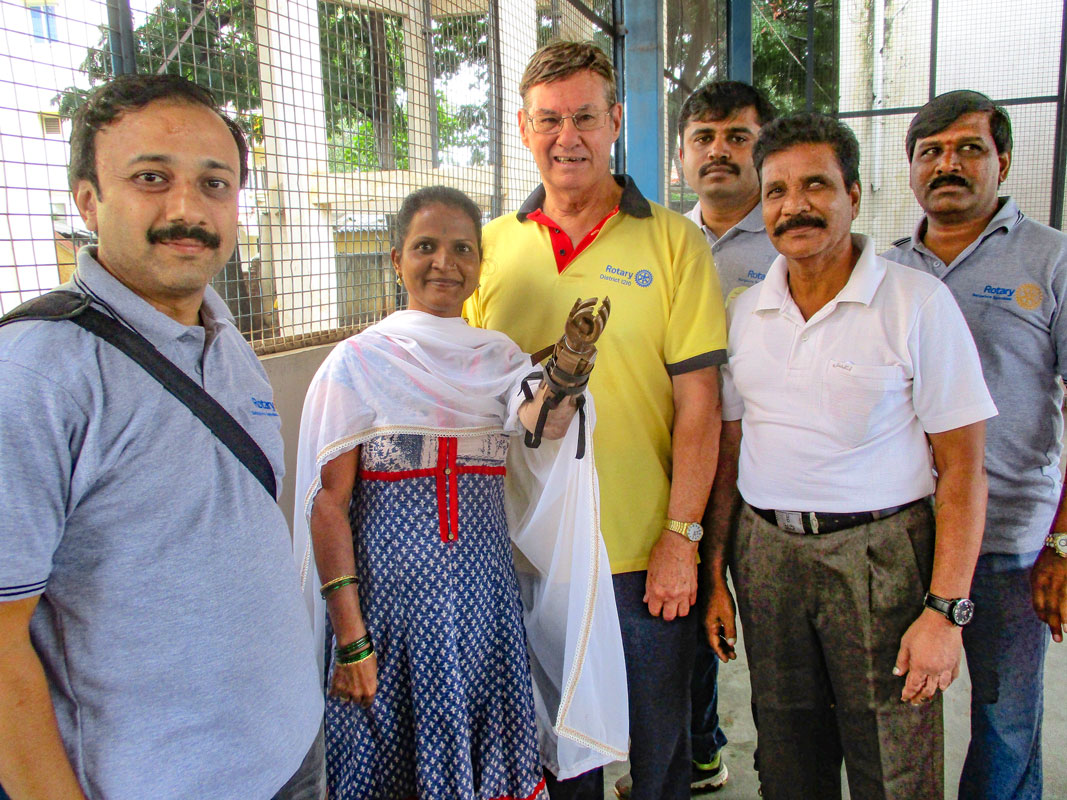
PDG Richard Green, one of the charity’s trustees and director in charge of India, says in a zoom interview with Rotary News that “in India, since 1990, we have established nine centres and funded a large number of mega limb camps in support of a number of Rotary clubs. In Africa, we’ve started 24 centres, 18 are still active, some having been lost to local disturbances and rebel activity; four new ones are planned for 2023.”
He begins the interview with the “delightful news” of a successful $34,000 global grant application to provide 600 limbs in Kerala. “I was in India in February, and PDG Scaria Jose Kattoor, RID 3211, our chief ambassador for India, was of tremendous help in doing the spadework.” The camps will be held in all the five revenue districts of RID 3211.
In the developing world, it is estimated, one in every 1,000 of the population has lost a limb. That equates to over a million in India alone.
RJL chairman Brian Stoyel, past RI director and president of RIBI, and PDG Green estimate that in India this British charity has provided over 50,000 limbs, a large number of crutches, wheelchairs and tricycles, and received 18 TRF global and matching grants. The number for Africa is over 30,000 limbs and 28 TRF global and matching grants.
The beginning
RJL was started after a Rotarian from UK, Peter Bettridge, visited limb-making workshops of the BMVSS (Bhagwan Mahaveer Viklang Sahayata Samiti), one of the largest organisations working to help the disabled in Jaipur. “This was in 1985 and he was on a holiday. He was so excited by what he saw that he decided to start the project as a charity in UK. It was simply the result of a single Rotarian from the UK visiting India that started the whole process.”
If you go to a private party, a Jaipur foot in India will cost ₹30,000 but we spend only around ₹6,000 for a limb and give it free to the recipients.
— PDG Scaria Jose Kattoor
The charity was set up in 1988 and registered in 1995, and since then the team involved in this project has been collecting funds to help this cause. Green says that the demand for the Jaipur limbs — both the foot and the LN-4 hand — is huge. “I was recently told by Mohankumar, the Rotarian in India who runs an LN-4 hand project, that there are 5 million amputees in India. It is surprising that 80 per cent of the amputations in India seem to be caused by electric shock. And most of these people are fitted with the LN-4 hand.” Other causes are road and rail accidents, mishaps on farms etc. The outreach camps and permanent limb centres established by the UK charity, most of them in hospitals, see people from both the genders and all age groups. “Young children often need artificial limbs due to congenital defects, and before India managed to wipe out polio, many were polio victims too,” says Green. Stoyel adds, “Our centres and camps do not refuse anyone due to age; the most important thing is that with a working limb the person can get an income.”
Green’s involvement with fitment of the Jaipur limbs in India began after he had hosted a group study exchange team leader from Bengaluru in 2008. “He invited me to stay with him, and took me to the JLC at the Ramaiah hospital in Bangalore. While driving down the road we saw a man in his early 40s, limping while walking by the side of the road and as my host talked to him, I heard the word polio. We got him into the limb camp and within two hours he had been measured for calipers, and told he could come and get the free limb fitted the next day.”
As they walked back to the car park, “this man came limping back, threw his arms around me and said: Thank you Rotary, I can get back to work now and support my family.”
On the time it takes to fit these limbs, and if prototypes are already available, Stoyel explains that speed is of the essence when these camps are held, “because for these camps, people travel over long distances. We feed and accommodate them for a day, but actually the limb-fitting using the traditional method takes about six hours. But because a large number of people attend these camps, the measurements are done on Day 1, and next day the limb is fitted.”
He adds that importance is given to training the technicians; “sustainability is the key word, because it’s no good if the work is done only when we or our trainers are there.”
The average cost of a limb in India is £70 (₹6,000). Explaining the process, Green says, “The amputee sits in front of our technician, who wraps the amputation stump with Plaster of Paris, that sets very quickly. The mould is made according to these measurements; what we get is a length of pipe similar to a drainpipe made of PVC, which is sturdy and durable. At the bottom of it is the Jaipur foot, which is a remarkable product made of a compound of very hard, durable, long-lasting rubber.”
Some of the recipients do come for refitment, particularly children because they are growing.
PDG Kattoor says the Jaipur foot “is the most cost-effective artificial limb in the world. If you go to a private party, a Jaipur foot in India will cost ₹30,000 but we spend only around ₹6,000 for a limb and give it free to the recipients.”
The Africa scene
Coming to Africa, Don Short, RJL trustee and Africa director of the charity, says that while “26 workshops have been already equipped and operating in Africa, four more are currently coming up in the Congo, Rwanda, Gambia and Ethiopia. All of these were delayed due to Covid and local reasons. The Gambia and Ethiopia workshops will have a capacity to make 1,000 limbs each, and the other two 500 limbs.”
The orthopaedic hospital network in Africa is not as vast as India, Short says, adding, “we usually establish a workshop within an existing hospital, equip it with the required material and equipment and train local technicians to manufacture these limbs. So when we go away they can continue without us, as opposed to a camp.” Unlike in India, in Africa the patients pay for the limb and the subsequent material is bought with these funds. RJL recommends the cost be pegged at $250 and $150 for above the knee and below the knee prosthetics. Adds PRID Stoyel, “If they have no money, they can return to us again for funds, so we can raise funds and keep that workshop going.”

Unlike in India, where the main reason for amputation is electric shock, in Africa there is a wider range, the most common being an accident, either on the road or at the workplace. When asked about limbs being lost to landmines, Stoyel responds: “Land mines are indeed a factor in Rwanda, or used to be. I had visited a workshop in Rwanda eight years ago and at that point there were seven amputees there; all of them landmine victims.”
So how much of this problem has the RJL managed to address in Africa? Short’s response: “We know we are only scratching the surface. There are many people who don’t have access to a prosthesis so they walk on crutches. Or are using a pole or just not getting off the ground. There is so much of ethnic conflict, violence in Africa, and there is a lot of scope for Rotary to do more work. In the remote areas, when there are such accidents, only a small room with inadequate medical facilities is available. By the time the injured person gets to a hospital, amputation is the only way to save life. So there are unnecessary amputations.”

Kattoor adds that while electric shock, sometimes due to illegal tapping in the electricity grid, is a vital factor in amputation in India, “I believe this is more common in North India. In the south, it is more due to road accidents and in Kerala, it is also due to diabetes.”
While on India Green’s experience is that the young girls who get an artificial limb adapt very easily “to their new limbs. I’ve even seen some of them dancing with these limbs. As they wear long skirts, often you can’t even tell that a girl has an artificial limb!”
He adds that the US charity which makes the LN-4 hand, first provided those hands for an RJL- supported project in Bengaluru in 2012. “The hand enables its wearers to grip a cup, work a hoe or tool and ride a bicycle. An early user was soon able to grip a pen in the hand and begin writing again. Using a computer keyboard or holding a crutch becomes normal. For so many amputees around the world the provision of a Jaipur limb not only gives mobility, but provides independence and a new life.”
While the system of setting up ambassadors has taken off in India, it hasn’t worked in Africa. The job of the local ambassador is to keep a watchful eye to facilitate and support this work.
Apart from its work in India and Africa, RJL has established permanent centres in Nepal, Pakistan and Sri Lanka. Following the earthquake in 2010, a major project established a workshop, patient hostel, training centre and 4×4 ambulance in Haiti.
Crucial role of TRF
Green explains that there are a set of Rotarians in the UK committed to raising funds to help amputees get artificial limbs in India and Africa, and the UK charity finds Rotary clubs in the UK and other countries to work with clubs in India and apply for global grants. “We’ve had help and support from TRF through so many GGs; without TRF we couldn’t have done this work!”
But, post-Covid, “we are finding fundraising very difficult and find the mentality of Rotarians has changed. We know there is a need out there and our Rotarians are trying to support us, but our income in the last few years is considerably reduced,” says Stoyel.
To reduce both cost and their carbon footprint, “we’re trying to adapt to distance training by using new technology through smart classes where we can sit in our homes but help train technicians in the outskirts of India or Africa.”
On the money RJL raises in the UK, the trustees estimate it is around £50,000–60,000 a year at the moment. “It used to be a lot more, but Covid has had a detrimental effect on raising funds in the UK not only for this cause but everything else, including malaria that I also work on,” Stoyel says.
But determined to continue this work, all the seven trustees of RJL are looking at ways to raise enough funds to continue their work. “We need a little more input from Rotarians across the globe. We have a very good relationship with TRF, we fully catalogue our projects and don’t have any rejects from the Foundation. We do hope your article will help raise funds by telling people of the need, our work and what we are trying to do to help.”
Kattoor urges Indian clubs to seize the opportunity provided by “RJL, UK, which is ready to provide international partners for GGs. Also, anything that we can get from the DDFs would be a huge help… there are many districts sitting on large amounts in their DDFs.”
A life-changing experience

I have worked with this UK charity for over 30 years; I started working with the RJL in 1992 and found it being supported by a set of highly compassionate Rotarians in the UK. When I did the first artificial limb camp, I was only 21 and my knowledge about a TRF grant was zero,” recalls PDG Scaria Jose Kattoor.
Commenting on the slow communication channels in the 1990s, he recalls that “one of the trustees of RJL would send letters to India, which arrived after 40 days! Next came the fax at ₹250 and even that was very expensive for a 21-year-old!”
Over the years the trustees of the UK charity guided him; “now I am a senior Rotarian but still love working with them because what we give people are not just limbs but life and hope. After all, £70 is just the cost of a good dinner in the UK.”
Maintaining that “I have become a better Rotarian thanks to this project,” Kattoor says Green and his team “give so much support and guidance to the clubs doing this work, and I help the clubs in India to answer all the TRF queries related to GGs.”
His first matching grant was “a project for 1,000 limbs back in 1995. It was a life-changing project for me. The real magic of Rotary is that it helps ordinary people like me to do extraordinary projects,” Kattoor adds, urging Indian clubs to grab the opportunity. “RJL, UK, which has highly committed RI officers, wants to organise more outreach camps; they motivate Rotary clubs/districts in the UK to join with Indian clubs/districts to go for global grants. They periodically visit clubs/districts in India/UK to create awareness about limb projects.”


